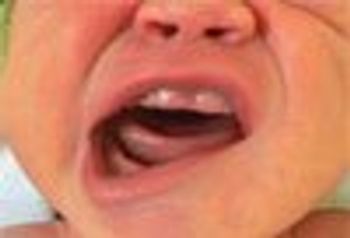
Young children who snore, a new study finds, are more likely for mood and anxiety disorders than their peers who snooze quietly at naptime.

Young children who snore, a new study finds, are more likely for mood and anxiety disorders than their peers who snooze quietly at naptime.

Quick quiz: how old does a baby have to be before its car seat can face the front?

How much, if anything, does a pediatrician make when on call?

A 2-month-old girl who lost 30 g over 7 days is noted to have multiple hepatic masses during abdominal ultrasonography to rule out pyloric stenosis; she is referred for further evaluation. She has a history of physiological jaundice and gastroesophageal reflux (GER). She continues to vomit despite treatment with ranitidine.

Two doctors of a 4-year-old boy were found negligent for a circumcision gone wrong. The boy, unnamed, was awarded $2.3 million in damages.

An 18-month-old white boy is brought to his well-care visit by his parents, who are concerned that for the past month he has been less social and active. He has appeared weak and has refused to walk or play with his siblings. He has also had a decreased appetite and has lost about 2 kg. He has vomited several times but with no bile or blood.

The chief residents at the Children’s Hospital of The King’s Daughters in Norfolk, Va, handle about 1 or 2 cases per week. About once a month, they have a great teaching case in their morning report. These standout cases challenge the residents’ diagnostic acumen and underscore key points that are both applicable to daily practice and likely to appear as questions on future board certification examinations.

This baby boy was born at 40 weeks’ gestation via repeated cesarean section without any distress after uncomplicated antenatal and perinatal periods. Weight was 6 lb 4 oz. Apgar scores were 9 and 9 at 1 and 5 minutes, respectively. He was noted to have lower lip asymmetry. While at rest, the lower lip protruded slightly on the right but otherwise appeared normal (A). During vigorous crying, the lower lip pulled downward to the right (B). All other physical findings were normal.

Something as simple as the correlation between birth defects and pollution may b as simple as looking at the month a child is born.

Nearly two of every three children who have routine procedures for heart disorders may be receiving treatment with a device designated for an off-label use, according to new study findings.

It?s a problem that most towns and cities would love to have: too many pediatric beds, and not enough sick children to fill them.


It?s not much of a bump, but there is still a rise in teen pregnancies.

This might not come as a big surprise, but children still aren't eating enough fruits and veggies.

Students in the 5th to 8th grades can stock up on "brain food" at the 10th annual Brain Awareness Week, a science- and health education-based fair sweeping various cities across the nation.

Children who are in the hospital or in school during a public health emergency now have two new measures in place to protect them, thanks to the Agency for Healthcare Research and Quality (AHRQ).

The SAFEKIDS Initiative is a cleverly-named program with a wholly positive goal: to determine the effects of sedatives and anesthetics in the developmental skills of very young children.

There aren't too many castles in South Dakota. A new one in Sioux Falls contains not dragons and princesses but doctors and nurses.

In 2008, Contemporary Pediatrics asked its readers to join the journal in celebrating its' 25th year by participating in a Call For Photos contest. Readers were asked to submit photos of pediatricians engaging with their patients, and photos of their patients participating in activities. Awards were given for first, second and third place winners.

Children with cleft lip and palate (CLP) are six times more likely to have difficulties with social interaction, a new study shows.

The results are in: youngster who watch TV before age 2 don't appear to have an edge in cognitive development by age 3, research shows.

If a child or teenager has parents with bipolar disorder, there's a strong chance that young person will go on to develop early-onset bipolar disorder, mood disorders and/or anxiety disorders, new research shows.

Although the majority of children with mild traumatic brain injury will not face any long-lasting adverse effects, there is a "substantial minority" -approximately 25%- who will experience a significant sharp rise in post-concussive symptoms, according to new research.

Contemporary Pediatrics 2008 Call for Photos

There's no more need to look for the BPA-free label on new baby bottles -- the chemical won't be used anymore.

A new federal advisory panel on autism has released its first guidelines for autism research.

The trigger that prompts alcohol consumption in young men may be nothing more than seeing others do it on TV.

On Monday, President Obama nominated Kansas governor Katherine Sebelius to head up the Department of Health and Human Services.

The health of the younger adult has not improved over time, according to a new federal report.

Children don?t have to be called four-eyes to feel self-conscious about their glasses.